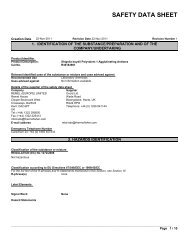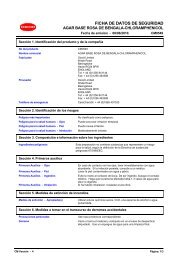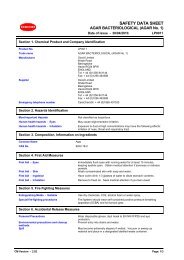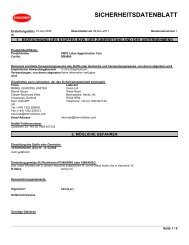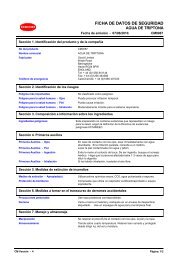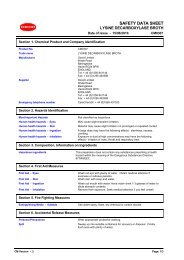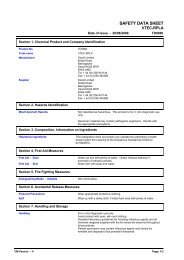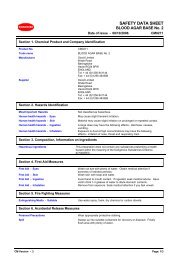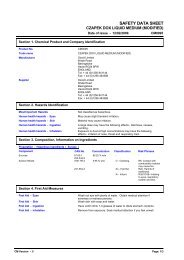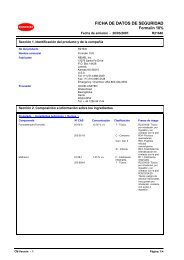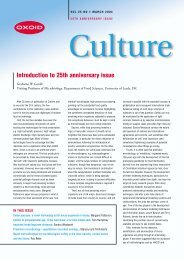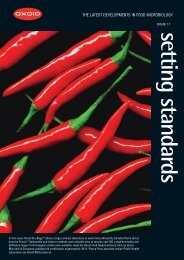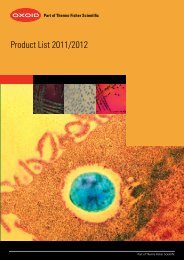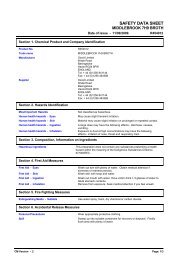IMAGEN™ Adenovirus - Oxoid
IMAGEN™ Adenovirus - Oxoid
IMAGEN™ Adenovirus - Oxoid
You also want an ePaper? Increase the reach of your titles
YUMPU automatically turns print PDFs into web optimized ePapers that Google loves.
Epifluorescence microscope with filter system for FITC (maximum excitation wavelength 490nm, mean<br />
emission wavelength 520nm) and x200-x500 magnification.<br />
Incubator at 37 °C.<br />
Low speed centrifuge.<br />
For Direct Specimens<br />
Sterile swabs.<br />
Mucus extractor (nasopharyngeal specimens only).<br />
For Culture Confirmation<br />
Sterile swabs, viral transport medium (VTM) and container suitable for collection, transportation and culture<br />
of <strong>Adenovirus</strong>es.<br />
Cell lines recommended for culture and isolation of <strong>Adenovirus</strong>es.<br />
8 PRECAUTIONS<br />
- For in vitro diagnostic use. Anyone performing an assay with this product must be trained in its use<br />
and must be experienced in laboratory procedures.<br />
8.1 SAFETY PRECAUTIONS<br />
8.1.1 The IMAGEN <strong>Adenovirus</strong> reagent contains 15mmol/L sodium azide, which is a poison. Sodium<br />
azide may react with copper and lead plumbing systems to form explosive metal azides. Always dispose of<br />
materials containing azide by flushing with large quantities of water.<br />
8.1.2 <strong>Adenovirus</strong> on the positive control slide has been shown to be non-infectious in cell culture, however,<br />
the slide should be handled and disposed of as though potentially infectious.<br />
8.1.3 Evans blue dye is present in the reagent. This may be carcinogenic and contact with the skin should<br />
be avoided.<br />
8.1.4 Care should be taken when using the mounting fluid as it may cause skin irritation. Skin should be<br />
flushed with water if contact occurs.<br />
8.1.5 Do not eat, drink, smoke, store or prepare foods, or apply cosmetics within the designated work area.<br />
8.1.6 Do not pipette materials by mouth.<br />
8.1.7 Wear disposable gloves while handling clinical specimens and infected cells, always wash hands after<br />
working with infectious materials.<br />
8.1.8 Dispose of all clinical specimens in accordance with local legislation.<br />
8.1.9 Safety data sheet available for professional user on request.<br />
8.2 TECHNICAL PRECAUTIONS<br />
8.2.1 Components must not be used after the expiry date printed on the labels. Do not mix or interchange<br />
different batches/lots of reagents.<br />
4/37 K6100EFG



